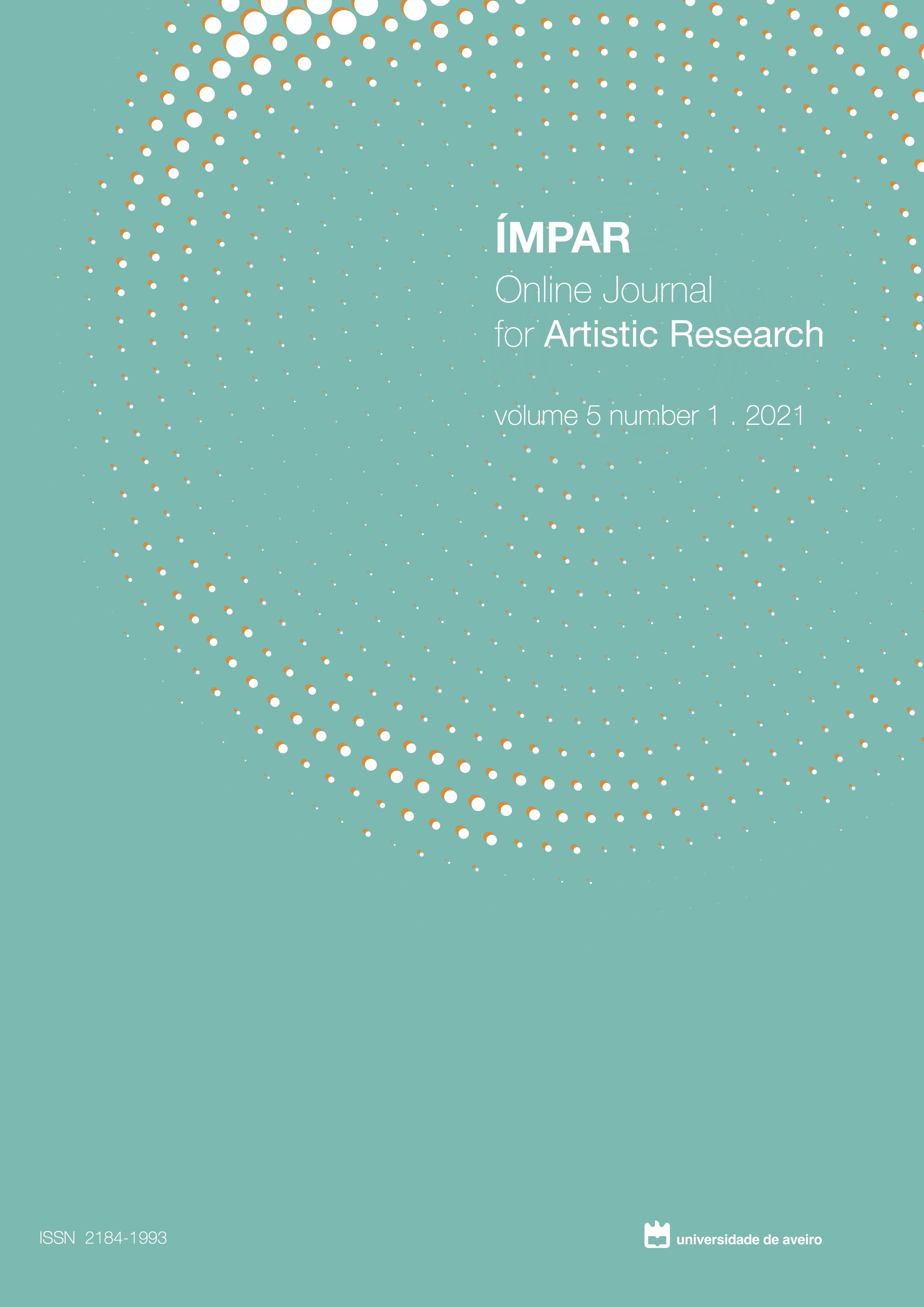‘Painting a Western musical score with Chinese ink’
Exploring Chinese cultural concepts and sonorities to develop a cross-cultural performance
Abstract
This research paper is an outcome of my ongoing Ph.D. project in which I intend to create a performance whose scenic dimension is explored to suggest a pre-reflective, embodied and interactive layer of awareness of Macao's mystical atmosphere to the audience. The performance will comprise the piano solo works of Áureo Castro, a Portuguese composer who lived in the 20th century in Macao and was an enthusiastic of Chinese music. His “Chinese Style” piano works merge Western composition techniques with melodies and rhythms inspired by Chinese folk music, thus revealing traces of Sino-Western interculturality.
This paper addresses the second piano sonata of Áureo Castro and describes how performative choices are explored having as reference Chinese culture concepts and Chinese instrumental sonorities and gestures. These choices most likely are influenced by the performer´s imagery and poetic narrative from her own living experiences in Macao.
Concepts such as non-sound, virtues, Chinese metaphors and musical gestures were experimented in order to create a compelling musical narrative. Moreover, piano playing and affordances were explored not only emulating and integrating the gestures and sonorities of traditional Chinese instrumentalists but also experimenting accordingly with musical parameters such as agogic, meter and phrasing to create sonorities that resemble or were inspired by Chinese music.
From my perspective as performer, a conventional interpretation of piano works (i.e. one that follows traditional Western performance practices) would fail to be representative of Áureo Castro’s intentions as a composer who had a fondness for Chinese music and aimed to express feelings concerning the exotic atmosphere of Macao and its communities, but would miss as well to explore essential affordances of this music. As revealed by Áureo Castro about one of his most prominent compositions – “Macao Scenes” – the composer seeks to express the music as a “painting with ink that breathes Chinese atmosphere”.
I hope this paper contributes for a better understanding on how exploring performative practices can enrich approaches and perspectives to cross-cultural music works and to contribute to the development of intercultural artistic research in the domain of music performance, where intercultural exchanges and hybridization are, on one hand, increasing and continuously reassessing cultural identities and, on other hand, have the potential to inspire future artistic works.
References
Barreto, L.F. (2017) – Portugal – China: Padrões de um Relacionamento Multissecular. Revista Militar, 2590, Novembro de 2017, 973-979.
Barreto, S. (1996). Áureo Castro (1917-1992). Revista da Cultura, 26, 131-140
Baguet, G. (1999) Percursos e trajectórias de uma História: A Música em Macau na Transição de Poderes. Revista Camões, 7, 84-95
Burnard, P., Mackinlay, E., & Powell, K. (2016). The Routledge International Handbook of Intercultural Arts Research. Routledge. https://doi.org/10.4324/9781315693699
Castro, Á. (2000). Aurei Carmina – Pianoforte Et Organo [Musical Score]. Diocese de Macau. http://spiox.edu.mo/en/publication/aurei-carmina-pianoforte-et-organo/
Chauderlot, C. (2012). Gods, Deities and Rituals of Macau. Fundação Rui Cunha.
Chiantore, L. (2017). Undisciplining music: Artistic research and historiographic activism. ÍMPAR: Online Journal for Artistic Research, 1(2), 3–21.
https://doi.org/10.34624/IMPAR.V1I2.775
Correia, J.S. (2014). Musical Performance as Embodied Socio-Emotional Meaning Construction: Finding an Effective Methodology for Interpretation. LAP LAMBERT Academic Publishing.
Dai, D. (2017). Música Católica em Macau no Século XX. Os compositores e suas obras num contexto histórico único. (Fernando Mão de Ferro (ed.)). Edições Colibri/Instituto Cultural da R.A.E de Macau.
Héroux, I. (2018). Creative processes in the shaping of a musical interpretation: A study of nine professional musicians. Frontiers in Psychology, 9(MAY). https://doi.org/10.3389/fpsyg.2018.00665
Kimberlin, C. T., & Euba, A. (1995). What is intercultural music and who are its practitioners? Music Research Institute.
http://www.music-research-inst.org/html/main/im_definition.htm
Lynn, M., & Marques, G. (2015). Áureo Castro: A musical portrait. Diocese de Macau/Academia de Música S. Pio X.
Lynn, M., & Marques, G. (2017). Catálogo de Manuscritos Musicais de Áureo Castro: Colecção da Academia de Música S. Pio X. Diocese de Macau - Academia de Música S. Pio X. Fundação Macau.
Matos, A., & Lages, M. (2011). Povos e Culturas. Portugal Intercultural (Vol.13). CEPCEP – Centro de Estudos dos Povos e Culturas de Expressão Portuguesa / Universidade Católica Portuguesa. Retrieved from: http://icm.fch.lisboa.ucp.pt/resources/documentos/cepcep/povos%20e%20culturas_13.pdf
Neuhaus, H. (1993). The Art of Piano Playing . London: Kahn & Averill.
Oliveira e Costa, J., & Lacerda, T. (2007). A Interculturalidade na Expansão Portuguesa (Séculos XV-XVIII) (Alto Comis). Paulinas Editora. www.oi.acime.gov.pt
Pierce, A. (2007). Deepening musical performance through movement: the theory and practice of embodied interpretation. Indiana University Press. https://doi.org/10.5860/choice.45-6687
Schechner, R. (2015). Performed Imaginaries. Routledge.
https://doi.org/10.4324/9781315747514
UNESCO. (2005). The 2005 Convention on the Protection and Promotion of the diversity of cultural expressions.
Copyright (c) 2021 ÍMPAR: Online Journal for Artistic Research

This work is licensed under a Creative Commons Attribution 4.0 International License.





